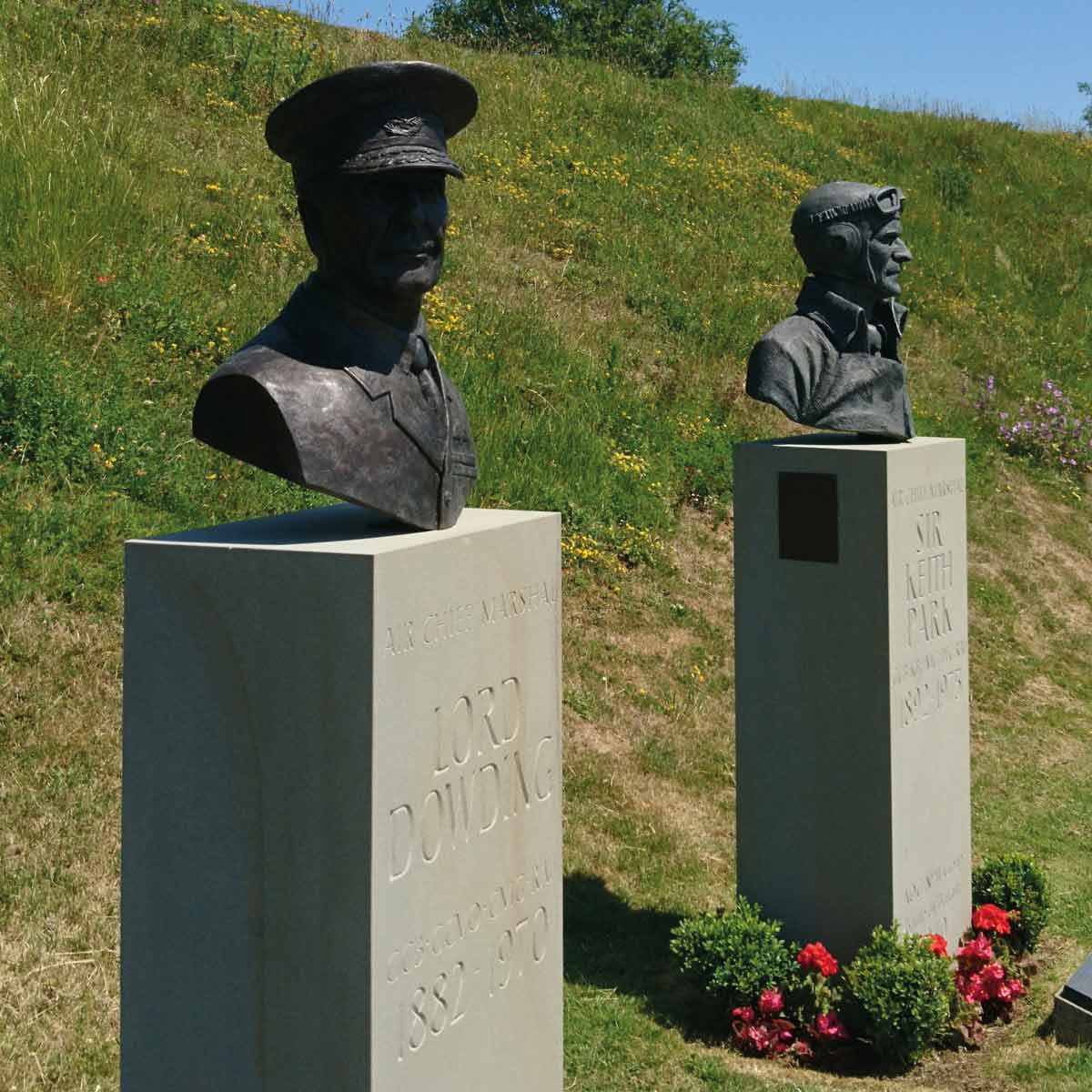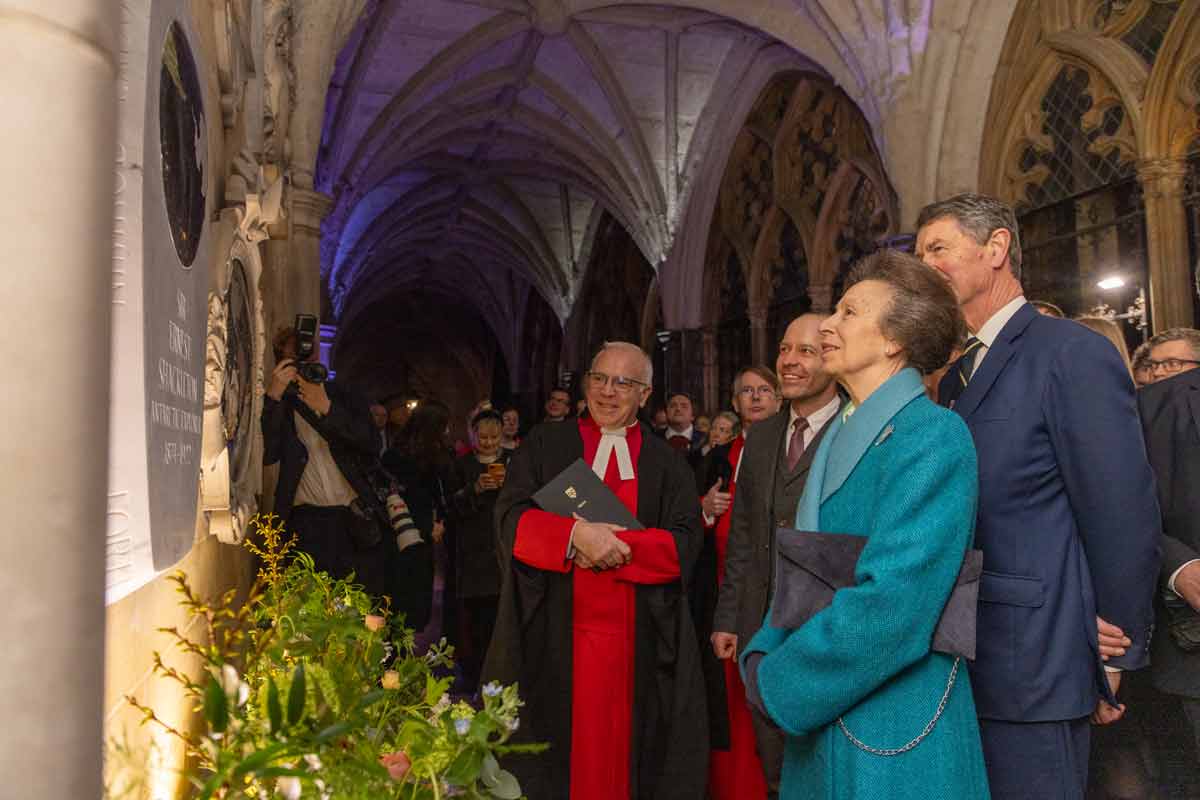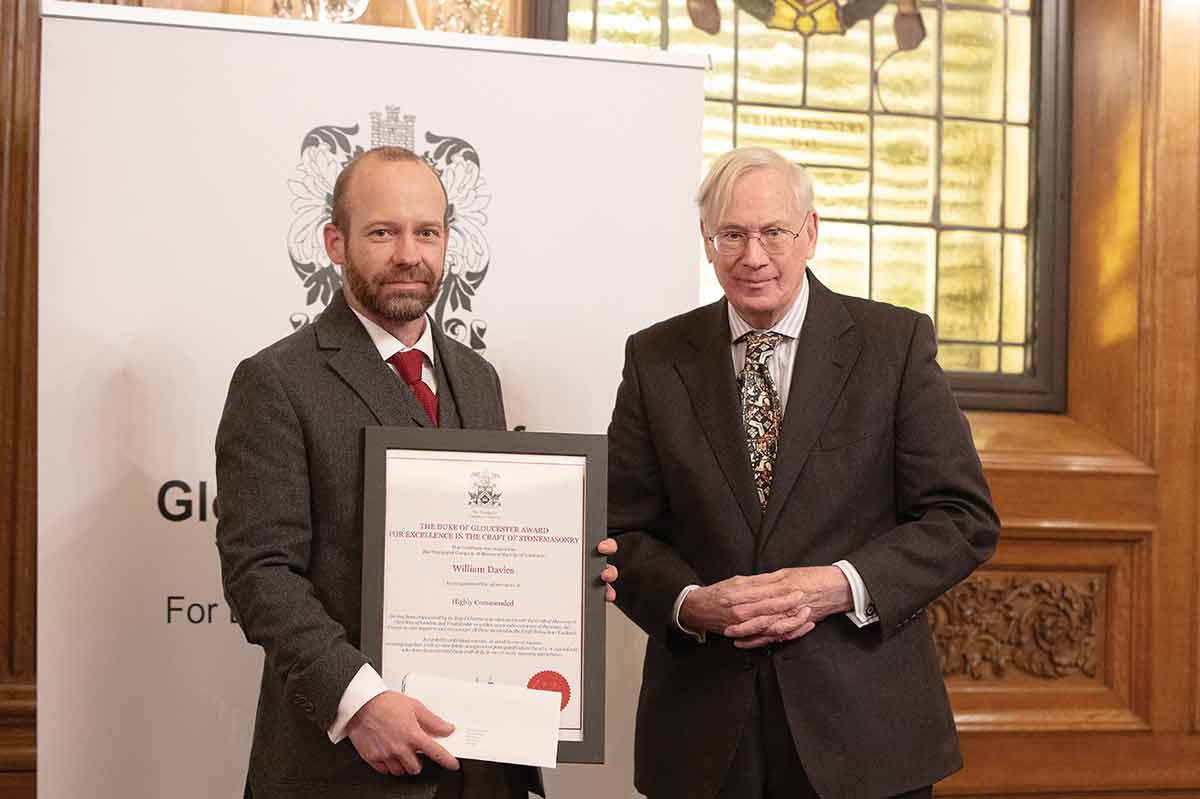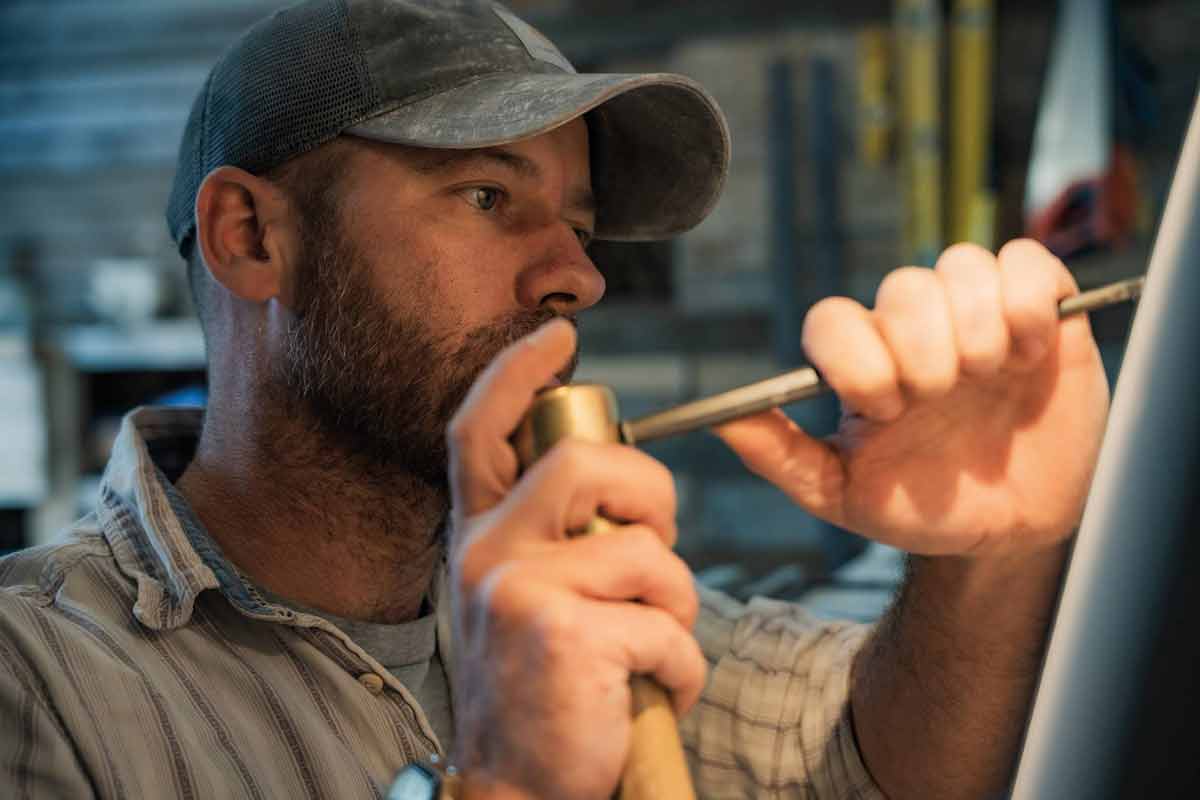It was a sunny morning in May 2001, I was 20 and sitting on Bournemouth beach trying to think of an excuse to get out of my 10am interview at what is now Arts University London.
I had already had interviews at most of the London art schools and a few others around the country, but none felt right. I called the receptionist at the university and apologised that my train from London had been cancelled and I was stuck at Waterloo Station. The receptionist had enough time to say “but I can hear waves and seagulls in the background, are you on the beach?” before the line went dead. It must have been something about the sea air that stirred a gut feeling that this wasn’t the right path for me, although I didn’t know what the right path would be.
That evening, I went home and told my parents what I’d done. During the following conversation Mum suggested stonemasonry. She had grown up in Winchester and had been friends with the masons that worked at the cathedral. My great grandfather sang in the cathedral choir and had taken her in as a child to sit in the choir stalls while he sang. Her father had a building firm, The Webb Bros in Winchester and had worked on many of the local churches. Me and my sister used to love climbing in his dusty blue pick-up truck while he drove around proudly showing us the work that he’d done around the town and neighbouring villages. My paternal grandfather in Yorkshire had a garage full of wood and tools and would set simple carpentry projects to keep us busy when we went up there to visit them. It was at this point in the early 2000s I set my sights on working as a stonemason at Winchester Cathedral, a building that my family have grown up with and love.
Stonemasonry offered a vocational option for somebody practically and creatively-minded and I found the Architectural Stonemasonry Course at Weymouth College in the UCAS book and enrolled. Over the two-year course we learnt how to work architectural details in stone – ball finials, tracery and mouldings as well as geometry and geology, and the importance of working to 1mm tolerances.
Following the course, I was offered a job with the Cathedral Works Organisation (CWO), a restoration company based in Chichester and London which is sadly no more. In my interview, their only prerequisite seemed to be that I didn’t have a criminal record. I told them that I had a caution for ‘fishing without a licence’ and they laughed.
At 22, I moved to London and worked on their sites there. A day on a masonry site is like a team building exercise. How will we move that stone that weighs half a ton from here to there, and then get it up onto there? Just doing that involves problem-solving, using simple mechanical aids (levers, pulleys, fulcrums, made up from bits of wood and scaffold tube found lying around), communication, co-ordination of movements, physical exertion, and paramount, an awareness of your teammates’ safety. You have their safety in your hands most of the day, and yours in theirs. This environment builds bonds and trust quickly. The banter that goes along with it teaches you how to laugh at yourself and how to not take life too seriously. There is a book called Stone Mad written by an Irish stonemason, Seamus Murphy, which describes this environment perfectly and far better than I can.
Countless people have helped me along the way but the four that stand out are Adam Stone, Jack O’Brian, Matt Pullen and Glen Daley. Adam was the director of CWO (now director of Chichester Stoneworks) and has continued to act as a mentor for me to this day. Jack and Matt are both masons who I worked with as a mason’s mate. They taught me the importance of having pride in your work, your workplace, and most importantly your tools and other people’s tools. Glen was a site foreman, and one of the best managers I have had, striking the balance perfectly between authority and friendship.
When we were working on the restoration of St Georges Chapel, Windsor Castle, where I met students from The City & Guilds of London Art School (CGLAS). They had been carving grotesques and were on site fixing their creations into the building. This was the art school I had been looking for some eight years previously. The three years I spent at CGLAS were the best three years of my life. Diane Magee taught an incredible and pivotal life-drawing course that ran alongside the Historical Stone Carving Diploma for the full three years. Kim Amis taught portraiture in clay, and mould making. There were a number of practicing professionals who each taught a day a week in their discipline, letter carving and design, and architectural stone carving and it was led by the course leader, an incredible mason and sculptor, Nina Bilbey. After my graduation, CGLAS took me on as a part-time technician for a year, and then as a part-time tutor, which I did alongside freelancing in London.

Bronze busts for the Battle of Britain Memorial Trust
I left CGLAS with a huge amount of debt but it was worth it. Through the CGLAS course and a scholarship from The Queen Elizabeth Scholarship Trust, I was introduced to many contacts and opportunities which were invaluable. I was fortunate to be involved in the fabrication of the prow sculpture for the Queen’s Jubilee barge, and was asked to produce two bronze busts of WWII heroes for The Battle of Britain Memorial Trust among other projects.
I eventually got fed up with the expense of London, paying off debts, but still not being able to afford to live and save, I left and spent a year in the South of France.
I returned to England having been offered the opportunity to help carve four 5-metre long lions with Chichester Stoneworks. As that job finished, a masonry job came up at Winchester Cathedral in 2013. I applied and was thrilled to be offered a position. When I started, there was an Heritage Lottery-funded project which provided mountains of work for a small team of three masons and two apprentices. We worked well as a team under the direction of another great manager, Ian Bartlett, who has since moved on to become the clerk of works at Westminster Abbey. Ian’s strength – a Viking of a man – came from the trust and respect that he had in his team to do the work they specialised in. In return he earnt our respect. Like Glen and Nina, Ian is able to navigate the line between authority and friendship with an instinctual dexterity. The defining attribute of all the good managers that I’ve had the privilege to work under, Adam, Glen, Nina and Ian, seems to be that they ensured that the happiness of their team was as important as the work they were doing.
After six years at the cathedral, I was offered the promotion to head mason. With my family history in Winchester, I took this role with a great sense of pride. It was also a welcome challenge. For the five years following the completion of the HLF project we had not worked on conserving the cathedral in the capacity that we, as a team were able. I took the opportunity to create projects that suited our abilities and continued the restoration of the beautiful building where it needed it most. The projects chosen would also enable us to employ an apprentice, and a chance to pass on the valuable skills required for protecting the country’s built heritage to the next generation. There are only nine cathedrals with working masonry departments left in the country, and they are one of the few places where traditional techniques of masonry can still be taught. These nine workshops are tied together by The Cathedral Workshop Fellowship (CWF) through their brilliant career development diploma course in conservation.
It was in my final year as head mason that I was approached by The James Caird Society who wanted to commission a memorial stone for the heroic achievements of Sir Ernest Shackleton, to be installed in the Cloister of Westminster Abbey. This was a career defining opportunity but involved sacrifices. To remain in my post as head mason, or to return to self-employment and accept the offer. I decided it was an opportunity too good to pass up and eventually took the plunge to go it alone again. I am enormously proud of the mark that I have left on Winchester Cathedral.
At the outset of the commission, The James Caird Society members gave me the inscription and two items that must be included in the design. One was the use of a beautiful olive-green marble from Connemara to reflect Shackleton’s Irish heritage. The second was that a triangle should feature somewhere in the design. When composing photographs, Shackleton would create a triangle within the composition. When designing any piece of work, I find that an image is quickly formed in my head of what the final piece will look like.
The design I had in mind would take influence from the shape of The James Caird — the modified lifeboat in which Shackleton and his team navigated 800 miles of treacherous Antarctic waters. This would be made in Carrara marble and, with its grey marbled streaks and beautifully translucency with an icy quality would form the cartouche, or main body of the memorial. Fixed into the upper half of the memorial would be a subtly convex globe, showing Antarctica centrally and the surrounding landmasses around the outside. The globe would be formed from Kilkenny limestone that when polished is a deep black, punctuated by silvery-grey shells, and resembling a clear night sky. The two stones together would contrast well and create the imagery of an Antarctic landscape at night. Antarctica itself would be inlaid into the globe with Carrara marble, and the continents of Africa, India and Australia would be inlaid with the Connemara marble, all worked back to be flush with the Kilkenny mother stone, to a fine polish that would highlight the lovely features of all the stone together. The inscription would in part run around the chamfered edge of the cartouche. On the face of the cartouche, the inscription would fit inside a triangle, completing the wishes of the commissioners.

Will with HRH The Princess Royal at the special dedication ceremony for the Sir Ernest Shackleton memorial at Westminster Abbey
As I write this, I’m still on a high as the memorial has just been unveiled by HRH The Princess Royal at a special dedication ceremony at Westminster Abbey. It was wonderful to meet her and she was very complimentary about my work – it all feels very surreal.

Will received a Duke of Gloucester Award for Excellence in the Craft of Stonemasonry
And in December, I was awarded a Duke of Gloucester award from the Duke himself – another career highlight.
I am writing this for the benefit of the people who are leaving school or college, sitting on a beach not knowing what direction they want their life to go, not knowing what careers are available to them. I was lucky that my mother suggested masonry to me as a career, and that we had a ‘craftiness’ in our family already. When I started working it was rare to meet a female stonemason, but over the years that has changed. On most of the CWF cohorts there is nearly an equal split of male and female students, and many more women are entering the trade. The industry is in desperate need of experienced and passionate workers to continue the conservation and care of our heritage, and it all starts at apprenticeship level. I have made a career out of working with a material that I love, and not a day of it has felt like work.

